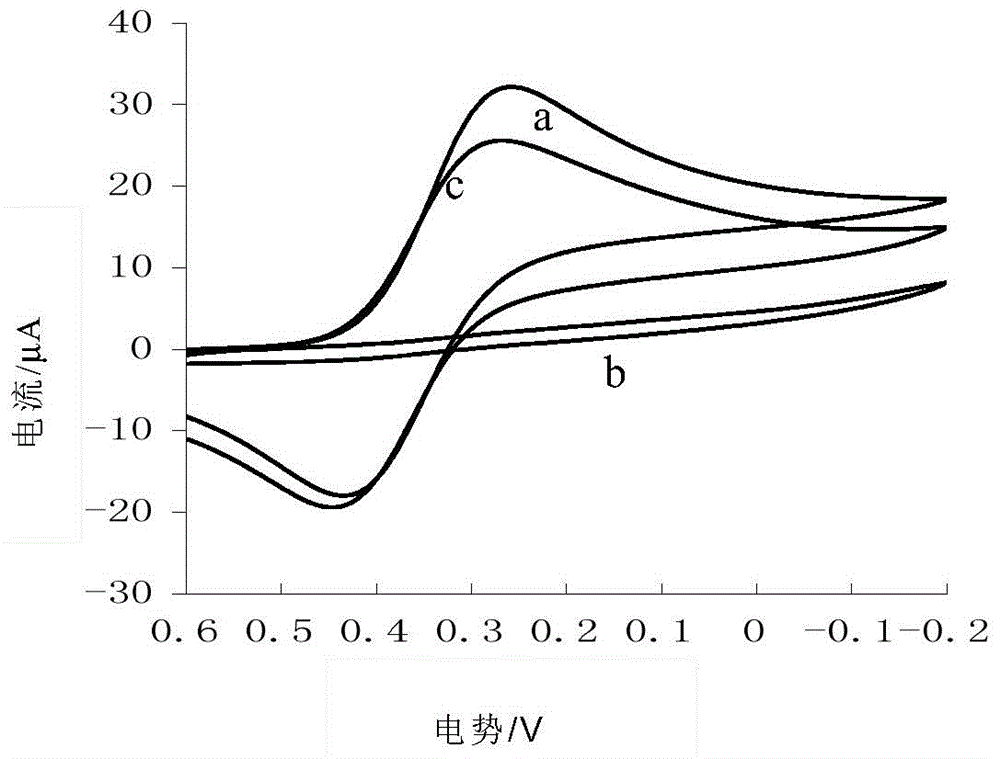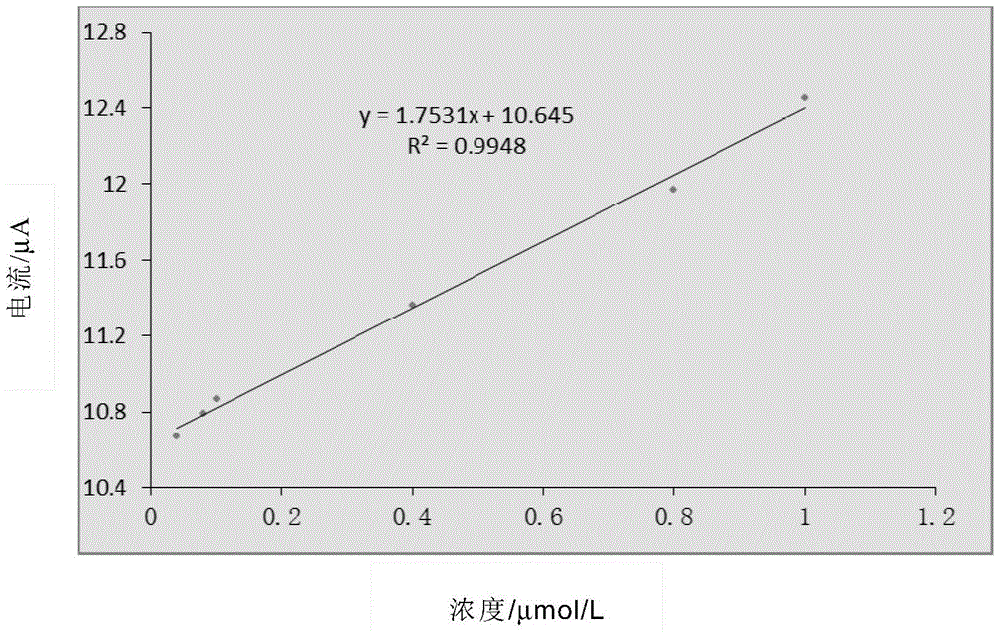A kind of preparation method of dicyandiamide molecularly imprinted polymer membrane electrode
A technology of molecular imprinting and polymer film, which is applied in the direction of analyzing materials, electrochemical variables of materials, and material analysis by electromagnetic means, can solve problems such as unsuitable for rapid measurement and popularization, large sample loss, cumbersome process, etc., and achieve high Selectivity, high sensitivity, overcome complex effects
- Summary
- Abstract
- Description
- Claims
- Application Information
AI Technical Summary
Problems solved by technology
Method used
Image
Examples
Embodiment 1
[0018] Example 1: Treatment of electrodes
[0019] The gold electrodes were polished to a mirror surface on 0.3 μm alumina powder. Sequentially wash with 1mol / L sulfuric acid solution, absolute ethanol, and distilled water for 5 minutes respectively. Then carry out electrochemical polishing treatment, in 0.5mol / L H 2 SO 4 Carry out cyclic voltammetry (CV) scan at -0.3 ~ 1.2V until it reaches a stable value, wash with deionized water and set aside.
Embodiment 2
[0020] Example 2: Preparation of Molecularly Imprinted Sensor Sensitive Membrane
[0021] 1. A three-electrode system is used for electropolymerization, and the gold electrode is used as the working electrode. With dicyandiamide as the template molecule and o-aminophenol as the functional monomer, 0.10mol / L of H 2 SO 4 Dissolve 2.50mmol of o-aminophenol, adjust the pH value to 4.50 with 0.40mol / L NaOH, add 0.5mmol (0.0435g) of dicyandiamide to dissolve, and then dissolve it in 50mL, and use the CV method to scan the scanning voltage in the range of -0.3~1.2V Polymerize 8-30 circles, scan speed is 50mV / s, equilibration time is 10s.
[0022] 2. The polymer film is deposited on the surface of the electrode, and 10 mL of 0.1-1.0 mol / L sulfuric acid solution is used as the eluting solvent for ultrasonic elution for 10 minutes to remove the template molecules from the electrode and make a molecular imprint with holes in the template molecular configuration. Polymer membrane elect...
Embodiment 3
[0027] Embodiment 3: Cyclic voltammetry investigation of different electrodes
[0028] Different electrodes at 5.0mmol / LK 3 [Fe(CN) 6 ] The CV change curve in the solution is as figure 1 Shown (in the figure: a. Bare gold electrode; b. Molecularly imprinted membrane electrode; c. Electrode after elution membrane plate). from figure 1 It can be seen that for molecularly imprinted membrane electrodes, the CV curves tend to be parallel, and almost no redox peaks are observed, indicating that there is a dense imprinted poly-o-aminophenol film on the surface of the electrode, which hinders the ion pairing of the probe between the bottom solution and the surface of the gold electrode. redox reaction; while imprinted "holes" appear after elution, [Fe(CN) 6 ] 3- The ions can diffuse to the surface of the gold electrode to react through the imprinted holes, and the peak current density increases.
PUM
| Property | Measurement | Unit |
|---|---|---|
| recovery rate | aaaaa | aaaaa |
Abstract
Description
Claims
Application Information
 Login to View More
Login to View More - R&D
- Intellectual Property
- Life Sciences
- Materials
- Tech Scout
- Unparalleled Data Quality
- Higher Quality Content
- 60% Fewer Hallucinations
Browse by: Latest US Patents, China's latest patents, Technical Efficacy Thesaurus, Application Domain, Technology Topic, Popular Technical Reports.
© 2025 PatSnap. All rights reserved.Legal|Privacy policy|Modern Slavery Act Transparency Statement|Sitemap|About US| Contact US: help@patsnap.com



